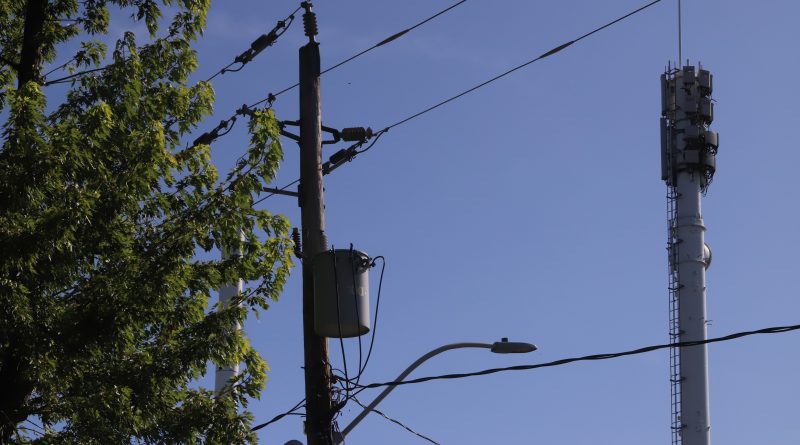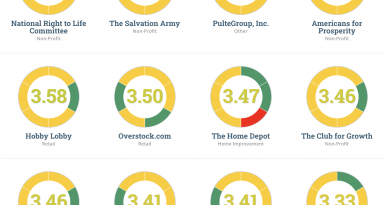Better Utility Regulation: How We Can Get Out Of This Mess
I’m working into some of the more cultural nuances of my new job, which involves working in a regulated industry in a densely packed region. Utility regulation is a bit of a mess– all FERC‘d up, one might say. There are a lot of things that utilities can and can’t do. But it’s also a very intentionally constructed mess. Because, for the most part, people know what the rules are and why they exist— even if they know why they have to change (more on this later). But there is one major difference that comes up in thinking about comparing the Midatlantic to Michigan, and that’s the difference between a growing, progressive state and a stagnant, conservative state. In the former, regulators are vigilant, critical, and engaged. In the latter, regulators are asleep at the wheel, beholden to business interests, or, just as bad, utterly indifferent. This is ever more apparent as I write this in the aftermath of a random storm in August, when several hundred thousand customers in Michigan were without power from a single event.
Regulators, Like SNAP! in 1990, Have Got The Power. Sometimes, They Don’t Use It.
First, some cultural background on the subject. Even as a transplant, I’ve got a lot of love for the Midwest. I’m always telling people to challenge coastal chauvinism, based on the idea that there are people and communities and entire ecosystems, variously technological, economic, natural, and cultural, in these Middle States. Hell, I even put it on my business cards! Midwestivus for the rest of us! But moving from working in the Midwest to working in the Midatlantic revealed a night and day shift in the approach to regulation, as well as in the approach to business itself. Better than arguably any other industry, the utility industry shows how regulation and policy exist in a complex, synergistic, and perpetual tango with for-profit business– not simply, as Some Of Those People would have you believe, as a damper.
In the Midwest, there are different approaches to regulation. You have the more gentle progressivism of Minnesota, which contrasts with the live-and-let-live, “prairie populism” of Iowa and Wisconsin– things that can actually produce some reforms and innovation, like gay marriage (Iowa was ahead of the game in 2009) or wind power development (Iowa now produces more of its energy from wind power than Denmark). You then have states like Ohio, that have, owing to historical legacies of well-developed industrial bases and shrewd management at local and regional levels, been able to continue to grow in spite of occasionally quite conservative policy, in spite of substantial losses of that same industrial base. (Remember the red-state-blue-state policy comparison? Ohio is one of the only red states in the country that has actually been able to grow and continues to maintain a strong base of corporate power).
Regulators, not unlike journalists, should do research and ask tough questions to make sure institutions and people are held accountable.
Michigan, meanwhile, embodies any number of paradoxes of a purple state. You have your hard-right insurrectionists Matt and Meshawn Maddock, who are a caricature of the worst possible stereotypes of the modern Republican Party. Then you have middle-of-the-road Democrats like Gretchen Whitmer and Debbie Stabenow, who have done virtually nothing to move the needle on issues of public transit or VMT reduction. Why? Because they erroneously believe that subsidizing the automotive industry will bring success to Michigan, rather than the other way around– success to Michigan bringing success to the automotive industry. Michigan, as a result, allows the auto industry to get away with a lot of stuff.
A Regulatory No-Mans Land Sparks No Innovation
A great example of how a lack of regulation can actually create more problems than it solves is the four years we lost under the Trump regime. While Detroit was spinning its wheels, literally and figuratively, thinking about the whole autonomous, connected, zero-crashes-but-actually-just-kidding, and definitely-not-lower-fatality-rate future of cars, the Trump Administration was busy trying to basically dismantle the federal government. What ended up happening around auto and transportation regulation specifically was, well, a lot of confusion.
Ford, GM, and other companies spent billions in the scramble to acquire startups to work on autonomous technology. But no one had much in the way of alignment around how these autonomous cars were supposed to work– or how they were supposed to be regulated. The private sector is, with a few caveats, great at developing solutions. What it’s really bad at, though, is developing those solutions collaboratively, connectively, or accessibly. This is where the role of regulators comes in. Regulators, not unlike journalists, should do research and ask tough questions to make sure institutions and people are held accountable.
Proactive, But Not Restrictive
Similar things have happened in other sectors, but there are success stories of where proactive regulatory approaches have facilitated innovation. Fintech is a great example, in which numerous regulatory jurisdictions took the approach of saying, “hey, just tell us what you’re trying to do, and we’ll work with you to make it happen.”
This is a middle regulatory ground on a spectrum of two extremes. At one extreme is a system in which the regulators are either nonexistent or just let people do whatever they want. This results in confusion, inefficiency from duplication or lack of compatibility, and, importantly, it often can result in consumers getting screwed. Trump’s dismantling of the CFPB and its completely non-responsive approach to a lot of issues are great examples. At the opposite end is a system where regulators are too strict and don’t allow innovation. A good example here is the well-meaning but utterly misguided California legislative efforts around things like regulating the gig economy. (I’ve written about this before).

How It Plays Out: Michigan vs. Maryland
Good regulators will generally be proactive and maintain good working relationships with the regulatees, as it were. They will emphasize collaboration and transparency rather than standoffishness, combativeness, or intransigence. Both now and in the past, I’ve work with some people who have great things to say about the regulators. And then I’ve worked with some other people who, while they might never say bad things about the regulators, have a much more, shall we say, grumbly approach to the issue. “Oh, so-and-so is gonna hate that!”
Here’s an imagined, side-by-side illustration of where we’re at, with two completely made up quotes (a.k.a. the first one is more or less word salad at a technical level but explains how specific we get in these conversations):
- Maryland Regulatory Working Group (Empower MD): “Yeah, so, I’m really concerned with line 216 of this draft for the filing– your honor, can you please bring this up on the– ok thank you, perfect- so, you’ve referred to a benefit-cost analysis calculation here whose primary assumption involves a reduced incidence of systemwide maintenance costs resulting from the installation of advanced metering infrastructure… it is the position of the office of the people’s counsel that we think that this systemwide cost should be considered on a localized basis from the AMI investment, and based on considering congestion from local feeder lines, given the requirement of system reliability maintenance surrounding these AMI nodes, which then negatively skews the BCA calculation by 0.73%, making this figure unsuitable for use in assessing the viability of this program. We therefore would like to request that the utilities revisit their calculations, or consider excluding these as regulated assets instead of billing the upgrades under the surcharge.”
- Michigan Regulatory Working Group: (MPSC-EWR) “Yeah, so, we want to be fuel-agnostic, so we obviously don’t want to exclude natural gas from any considerations of decarbonization– it would be too expensive to eliminate natural gas. Just look at the chart, provided by our own engineers! We really need to make sure we are not cutting CNG and LNG out of the conversation about decarbonization.”
Make no mistake– there ARE certainly administrative law judges who preside over goings-on in Michigan regulatory policy. But the longstanding policy workgroups that bring together diverse groups of stakeholders do not have a presiding judge. They have agency representatives who, though intelligent, competent, and well-meaning, lack any power to effect meaningful policy shifts. The needles do not move. There’s also the fact that Michigan’s energy efficiency target required of utilities is half that of Maryland’s.
…utilities operating in Rust Belt cities are required to somehow deliver the same amount of service with far less density, and therefore less revenue per service area. But the density argument falls apart when you look at the SAIDI comparison with places like Nebraska, which have some ridiculous, extreme weather, but often have much higher reliability.
Proactive Regulation– Considering System Reliability
As consumers are understandably furious over DTE’s system reliability or lack thereof, powerful voices– like Michigan Congresswoman Rashida Tlaib and Attorney General Dana Nessel– have made public statements condemning the utility and demanding accountability. It’s not simply a matter of restoring the power and giving people credits on their bill, though. It’s a matter of revamping Michigan’s approach to utility regulation overall. This begins with greater accountability and systemwide reliability. By EIA metrics like SAIDI, which measures the number of outage-minutes-per-customer per year, A Certain Utility In The Midatlantic performs about ten times better than DTE. Consumers Energy, which I’ve praised in the past for its approach to ditching coal power, with some caveats, performs even worse than DTE.
EIA’s metrics refer to Major Event Days (MED), which is, of course, a whole ‘nother thing we’re going to have to talk about at some point as we routinely smash records for rainfall and temperature in the great age of global climate collapse and whatever. In other words, this is going to become business as usual, and MED is going to be a thing of the past. When the weather forecast calls for 0.63″ of rain overnight and we end up getting 2″ in an hour, that suggests that any day can be a major event day.
Is Michigan’s Low Density A Disadvantage?
You could argue that an east coast utility’s reliability numbers could be better than DTE’s because they operate in a much denser service territory. Even the suburbs of DC, for example, have a substantially higher density than, say, Macomb or Oakland County in Michigan. One webinar I attended of the Berkeley Haas School recently actually raised this issue– given that utilities operating in Rust Belt cities are required to somehow deliver the same amount of service with far less density (and therefore less revenue per service area). But the density argument falls apart when you look at the SAIDI comparison with places like Nebraska, which have some ridiculous, extreme weather, but often have much higher reliability.
A $25 bill credit, Tlaib said on Twitter, is not going to cut it. What else certainly isn’t going to cut it? A “business as usual” approach to regulation. The MPSC has been asleep at the wheel for too long. The utilities have been allowed to raise their rates as infrastructure languishes. If the utilities want to raise their rates, let it come in the form of a surcharge to fund– and only to fund- major investments to decarbonize the grid and harden the infrastructure. There should also be other tools in place– required by law if the utilities won’t do it voluntarily- to enable markets to work. I’m not thinking about electric choice but rather things like net metering to encourage solar adoption. DTE, for its part, shot down the idea of on-bill financing for energy improvements before, and groups like Michigan Saves have stepped up in a major way to provide Michiganders with a generally affordable way to finance energy-related home improvements.
There is nothing saying that the state can’t, within the limits of the state and US Constitutions, restrict a utility’s ability to fund disinformation campaigns or lobby against solar power, for example. Nor is there anything saying that municipalities and the state government at large can’t take the lead on this issue. This has become a popular discussion in San Francisco around municipalization of PG&E. It’s a huge can of worms. But it’s certainly a conversation that needs to be had. These systems aren’t working any better if we just sit around and, you know, allow the conversation to turn to compressed natural gas infrastructure development for how we’re going to decarbonize the economy.
The views of the author do not necessarily reflect those of The Potomac Electric Power Company, a.k.a. Pepco, Exelon Corp., and/or any co-conspirators in the EGLE Transportation workgroup. This article was updated on 14 September 2021 with some additional clarifying details.










